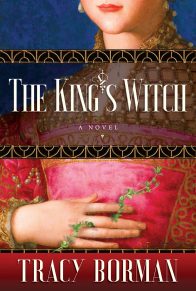“For Borman, the intimate particulars of everyday life are what help the past come bracingly, stirringly alive. Her full-quivered social history of the Tudor monarchs . . . furnishes readers with a ‘Hey, did you know . . . ?’ on almost every page . . . [An] authoritative work.” —Jean Zimmerman, New York Times Book Review
“Borman’s passion for the Tudor period shines forth from the pages of this fascinatingly detailed book.” —Allison Weir, author of The Six Wives of Henry VIII
“[Written] with effortless verve . . . [A] riveting history.” —O, The Oprah Magazine
“[A] fascinating new book . . . No royal family is better known . . . But there’s still much to learn from The Private Lives of the Tudors thanks to the expertise and persistence of Borman . . . The most captivating moments of Private Lives, and there are plenty of them, bring the reader into other personal Tudor moments of strength, weakness, and heartache.” —Randy Dotinga, Christian Science Monitor
“Comprehensively researched and compulsively readable . . . The potions, plots, liaisons and marriages described in this book are thoroughly entertaining . . . A bloody good read.” —Paul Duncan, Minneapolis Star Tribune
“This is a fascinating and informative account of the personal lives of the Tudors. So much so that it is certain that the average person would surely be unfamiliar with much of this history.” —Stuart McClung, New York Journal of Books
“[Borman] artfully crafts a thorough reimagining of life at the Tudor court, while also providing a look at the humanity of these larger-than-life figures . . . Borman’s history expands well beyond public knowledge to the definite delight of Tudor fans.” —Katie McGaha, Library Journal
“A measured, precise, and humanizing overview of the behind-the-scenes monarchical lives of Henry VII, Henry VIII, Edward VII, Mary I, and Elizabeth I . . . Fascinating . . . This Downton Abbey-like peek into the everyday lives of these privileged yet cloistered rulers and their households will appeal to both serious scholars and Tudor enthusiasts.” —Booklist
“Amusing [and] well-researched . . . [An] entertaining mixture of esoteric social history and well-known details of the persona lives of the Tudor monarchs.” —Kirkus Reviews
“Borman . . . unearth[s] some obscure and intriguing tidbits that have been overlooked by other historians . . . Though all five Tudor monarchs made even their most private moments into courtly spectacles . . . Borman’s fine book goes far toward humanizing them. Recommended.” —Publishers Weekly
“[A] fascinating, detailed account . . . Borman ranges far and wide in her quest to throw light on what the Tudor kings and queens ate, what they wore, what they did with their days and how they spent their nights . . . This is a book of rich scholarship. Tracy Borman . . . knows her Tudor history inside out.” —Daily Mail (UK)
“Borman approaches her topic with huge enthusiasm and a keen eye . . . All good fun. And there is plenty of it . . . Borman really succeeds when she uses her store of homely tidbits to recast our perceptions of Tudors we thought we knew . . . This is a very human story of a remarkable family, full of vignettes that sit long in the mind.” —Sunday Times (UK)
“Tracy Borman’s eye for detail is impressive; the book is packed with fascinating courtly minutiae . . . [Borman is] a very good historian and this is a wonderful book.” —Times (UK)
“Like Alison Weir . . . Borman is an authoritative and engaging writer, good at prising out those humanizing details that make the past alive to us.” —Guardian (UK)












